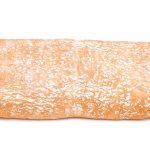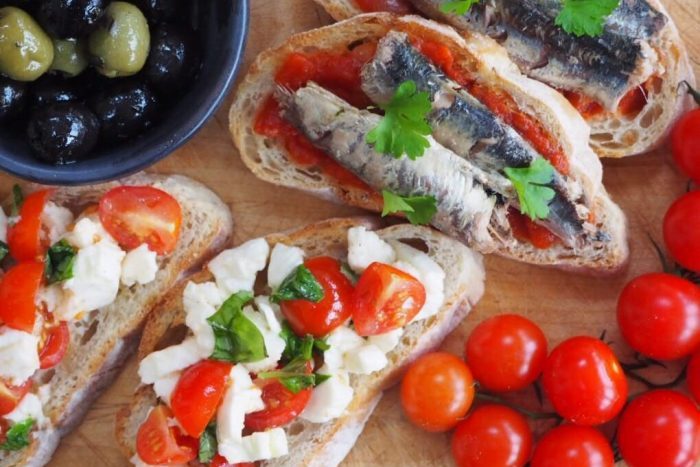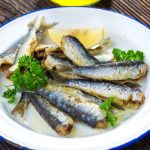For a true Italian feel, why not try our Bellissima Bruschetta, a quick and healthy snack/lunch - delicious and nutritious- Magnifico!
Skills Check
Follow a recipe; follow food safety & hygiene rules; tidy away; use measuring spoons; cut using bridge/claw technique safely; use a citrus squeezer; mash; tear herbs; season to taste; spread with a knife/spoon; use a toaster (with adult supervision).
Equipment
Toaster, 2 small bowls, measuring spoons, citrus squeezer, tin opener, fork, spoon, chopping board, knife, bread knife.
Allergens (Please note the allergens listed are indicative only. Allergens vary depending on brand; check the labels on the products you use)
Gluten | Milk | Fish | May contain soya
Ingredients (serves 2):
- 1 ciabatta loaf
Sardine Topping:
- 135 g tin of sardines in water
- 2 tbsp chopped tomatoes
- Squeeze of lemon juice
- Black pepper
Italian Tricolour Topping:
- 12 cherry tomatoes
- 140 g low fat mozzarella cheese
- Fresh basil leaves
- Black pepper
- 1 tbsp olive oil
Method
- Slice the ciabatta into even slices and toast until they are lightly brown.
For the sardine topping:
- Put the sardines in a bowl and mash with a fork. Add the chopped tomato, lemon juice and pepper and mix together well.
Spread the mixture onto half of the ciabatta slices.
For the Tricolour topping:
- Cut the cherry tomatoes into quarters and put them in a bowl.
- Rip the mozzarella into small pieces and add to the bowl.
- Tear up the basil leaves and add them to the bowl too, with some black pepper and the olive oil.
- Mix it together well and spread onto the remaining ciabatta slices.
Serve with olives for a truly Italian experience!
So thinking about Bellissima Bruschetta ...

Sardines (even canned ones) are high in heart-healthy omega-3 fatty acids. They are high in calcium and a source of vitamin D; essential for healthy teeth and bones.
Tomatoes are really good for us containing a wide range of vitamins and minerals.
Mozzarella Cheese is lower in fat and salt than hard cheeses, but it should still be used sparingly to reduce fat and salt. Try to use a reduced fat mozzarella.
Nutritional Information
| Energy | 2504kJ/597kcal | 30% | |
| High | Fat | 27.0g | 39% |
| High | Saturates | 8.8g | 44% |
| Low | Sugars | 9.3g | 10% |
| Med | Salt | 1.8g | 30% |
per 403g serving
% of an adult's reference intake
Typical values per 100g: Energy 621kJ / 148kcal
Notes
A traffic light system is used on nutrition labels to make it easier to see which foods and drinks are lower in calories, fat, sugar and salt. Try and choose more ‘greens’ and ‘ambers’ and fewer ‘reds’, and stick to smaller portions of ‘reds’.
Just because a recipe or a food has a red traffic light doesn’t mean you shouldn’t eat it. Understanding why a food or recipe might have a red light can be helpful. For example oily fish is high in total fat and so any recipe containing oily fish is likely to be ‘red’ for fat. But it is recommended that we eat oily fish at least once a week because the type of fat it contains is beneficial for our health.
% Reference Intakes are also shown. Reference Intakes are guidelines about the approximate amount of particular nutrients and energy required for a healthy diet (based on an average-sized woman doing an average amount of physical activity). Most children will require less than these Reference Intakes. The contribution of one serving of a food or drink to the Reference Intake for each nutrient is expressed as a percentage.




